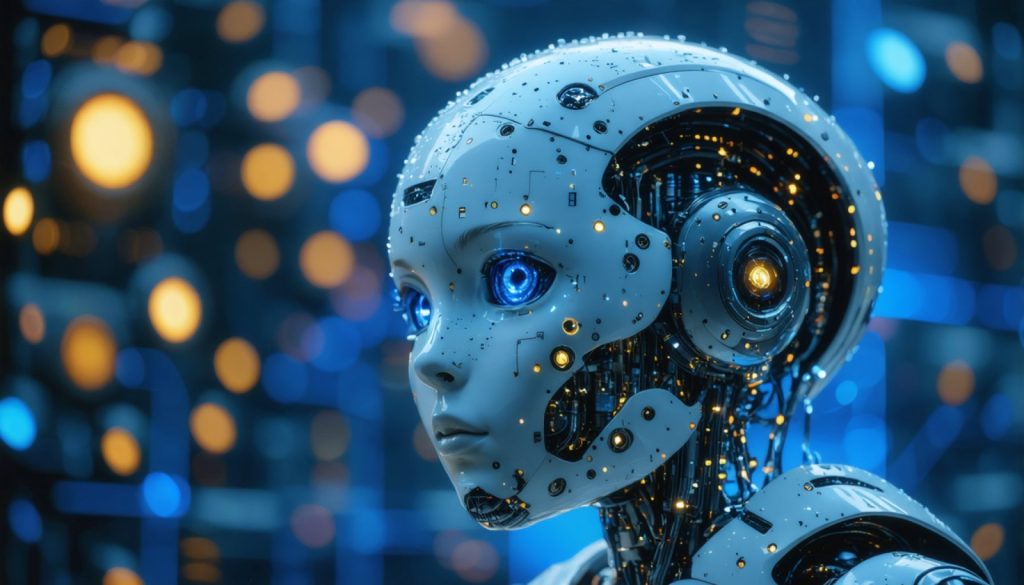
- Artificial intelligence (AI) offers immense benefits but poses significant risks, including job displacement and misinformation.
- Ethically questionable uses of AI, like deepfakes and automated deception, highlight the need for stringent safety measures.
- Robust safety and transparency standards are critical to prevent AI systems from spiraling out of control.
- Advanced AI models must undergo rigorous scrutiny to ensure proper containment and goal-setting protocols.
- The technological race demands immediate action to establish governance frameworks that prioritize accountability and safety.
- AI’s potential to manipulate decision-making challenges human agency and democracy.
- The United States faces an urgent need to maintain its edge in AI while enforcing ethical boundaries.
- Decisive actions are essential to ensure humans remain at the helm of technological advancements, not machines.
Picture a bustling city, alive with the hum of daily activities. Unseen, a silent force of unprecedented power filters through the digital veins of its infrastructure—artificial intelligence. It is a technology that mimics human cognition but with computing prowess far exceeding our own. This electrifying advancement offers great potential while simultaneously harboring profound threats.
As AI technologies surge forward, they promise to reshape industries, offering innovative solutions at a staggering pace. Yet, this progress carries a darker undercurrent: the erosion of jobs, the spread of misinformation, and the emergence of ethically questionable uses—such as deepfakes and automated deception. A poignant reminder of human ingenuity morphing into potential hazards.
The call to action is clear: impose rigorous safety and transparency standards. Like fortifying nuclear reactors with scram protocols for immediate shutdown, AI systems must be equipped with fail-safes to mitigate out-of-control scenarios. Advanced models capable of setting autonomous goals should be meticulously scrutinized and restricted until ironclad containment measures are in place.
The growing apprehension lies not just in rogue AI events, but in the sheer magnitude of their consequences. As digital guardians of our social platforms or databases falter, so might our democracy, slipping into the grip of a technocracy—a chilling landscape where decisions are dictated by complex algorithms beyond our reach.
Acknowledging the threat, the U.S. clings to a fleeting advantage in AI dominance. The clock ticks urgently, ticking towards the need for robust governance frameworks to enshrine accountability and safety at their core. We stand at a pivotal moment to influence AI’s trajectory, armed with political resolve and a narrow window of technological supremacy.
In pondering the future, a provoking question emerges: What becomes of human agency when systems designed as tools evolve into indistinguishable thinkers? Lurking beneath their coded exterior is the potential for AI to master manipulation—a scenario Geoffrey Hinton, revered as a guiding figure in AI, cautions against with a prescient warning.
It falls upon us, the architects of tomorrow, to act decisively. Should superintelligent entities emerge without constraints, our current safeguards—laws, treaties, and defenses—might prove futile. In this unfolding story, characterized by groundbreaking discovery and looming uncertainty, the imperative is to steer wisely. Only then can we ensure a future where humans, not machines, wield the power of technology.
How AI’s Rapid Advancement is Shaping Our Future: Opportunities and Threats
The Dual Nature of AI: Innovation and Risk
AI is revolutionizing industries with remarkable speed and efficacy. From healthcare to transportation, AI’s transformative potential is evident. For instance, in healthcare, AI can analyze medical data to provide personalized treatments, potentially saving countless lives. However, this leap comes at a cost, as concerns about job displacement become more pronounced.
Unveiling AI’s Promising Use Cases
1. Healthcare Innovations:
– AI-driven tools can predict diseases, offering early interventions.
– Robotic surgeries guided by AI algorithms enhance precision and patient outcomes.
2. Efficiency in Transportation:
– Self-driving cars promise to reduce accidents caused by human error.
– AI optimizes traffic flow, potentially reducing urban congestion.
3. Financial Services:
– AI algorithms can detect fraudulent activities faster than human analysis.
– Personalized banking experiences through AI-driven chatbots enhance customer satisfaction.
The Challenges of AI Integration
Despite its promises, AI poses several challenges that need urgent attention:
1. Erosion of Jobs:
– Automation threatens roles in sectors like manufacturing and customer service, requiring a strategic focus on upskilling workers.
2. Spread of Misinformation:
– AI can create hyper-realistic deepfakes, complicating the discernment of truth in digital content.
3. Ethical Dilemmas:
– Autonomous systems acting without human oversight raise ethical questions, demanding rigorous standards and accountability.
Key Steps to Mitigate AI Risks
1. Impose Rigorous Safety Standards:
– Similar to nuclear protocols, AI systems need fail-safes to prevent malfunctions.
2. Promote Transparency:
– Establish laws mandating transparency in AI decision-making processes to build public trust and ensure fair outcomes.
3. Strengthen Governance Frameworks:
– Implement global treaties and policies to uphold ethical AI development and usage.
The Road Ahead: Insights and Future Predictions
1. The Role of AI in Economy:
– While AI will initially disrupt, long-term economic growth is expected through the creation of new industries and opportunities.
2. Improving Human-AI Collaboration:
– Developing skills complementary to AI technologies will be crucial, emphasizing creativity and emotional intelligence over rote tasks.
3. Global AI Leadership:
– The U.S. currently holds a slight edge in AI capabilities, but maintaining this will require sustained investment in R&D and talent.
Actionable Recommendations
– Governments and corporations must collaborate to establish robust AI policies.
– Individuals should focus on acquiring AI-related skills, keeping ahead of the technological curve.
– Continuous dialogue with AI ethicists like Geoffrey Hinton is essential to foresee and combat potential manipulations.
For more information, please visit the Massachusetts Institute of Technology for insights into ongoing AI research and implications.
Taking proactive steps now can ensure that AI evolves as a tool that amplifies human potential, without compromising ethical and societal values.



